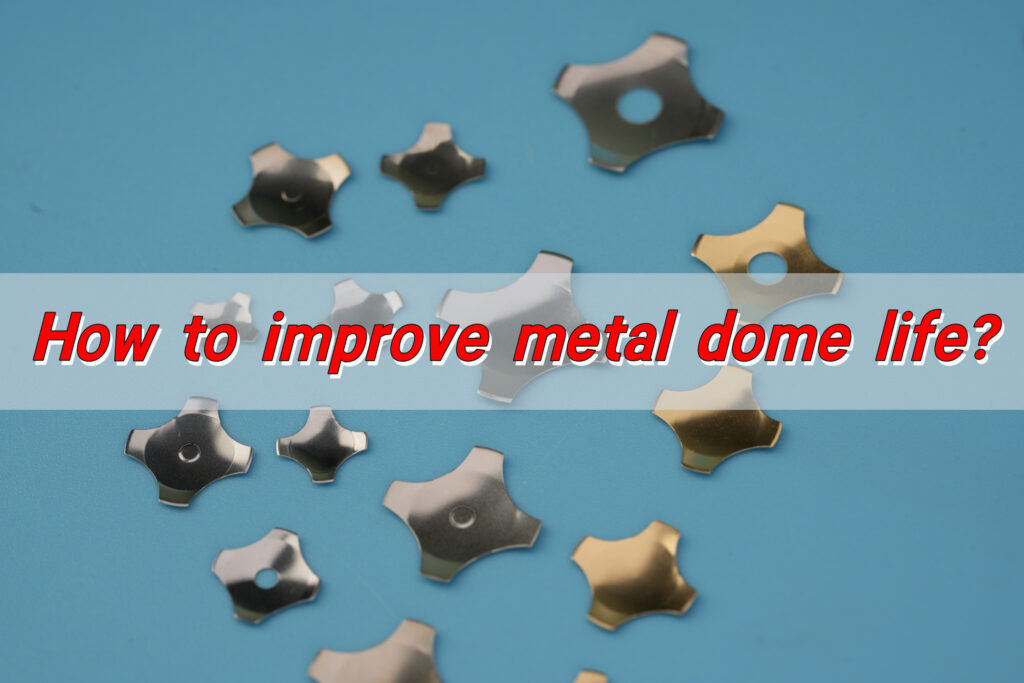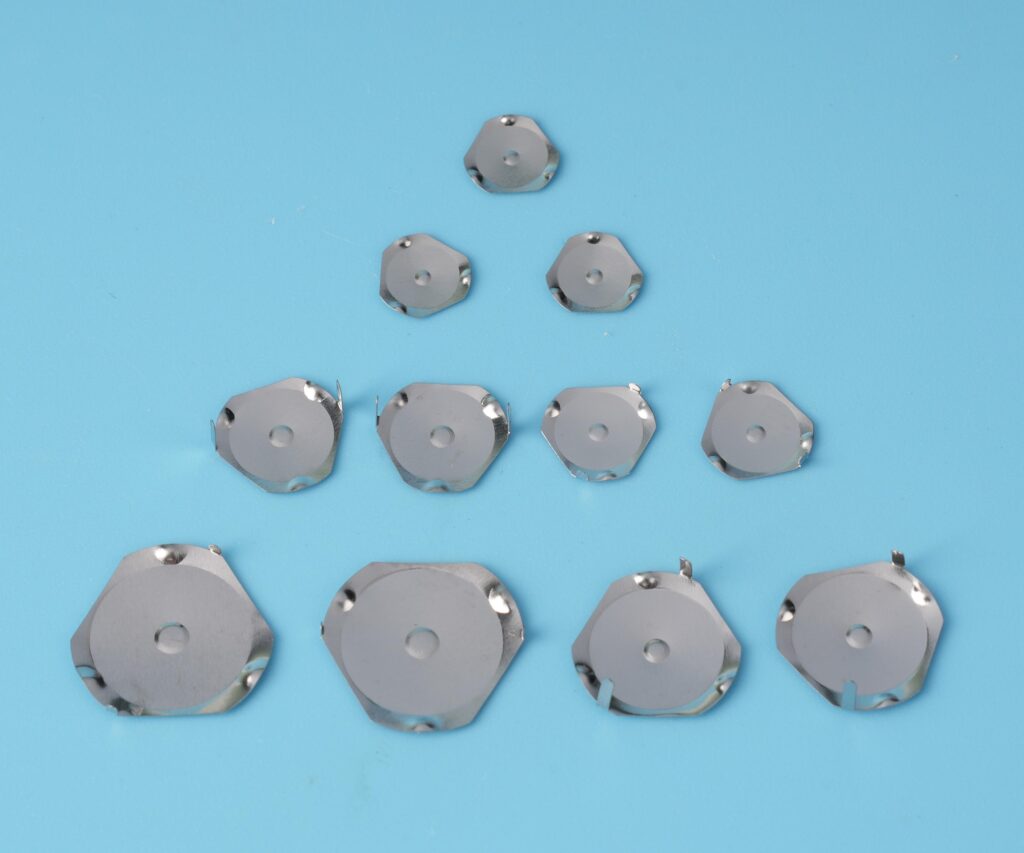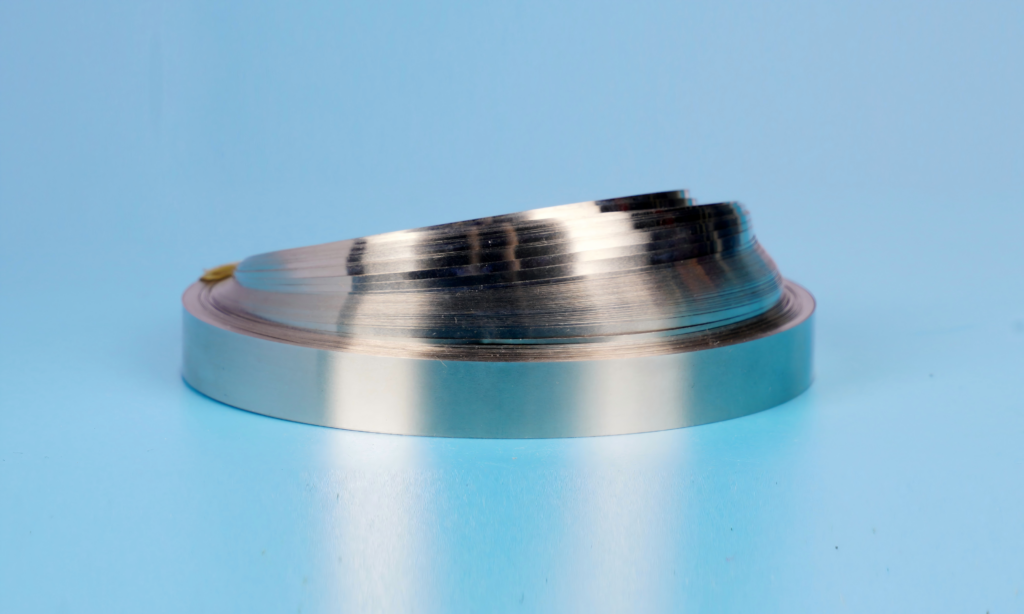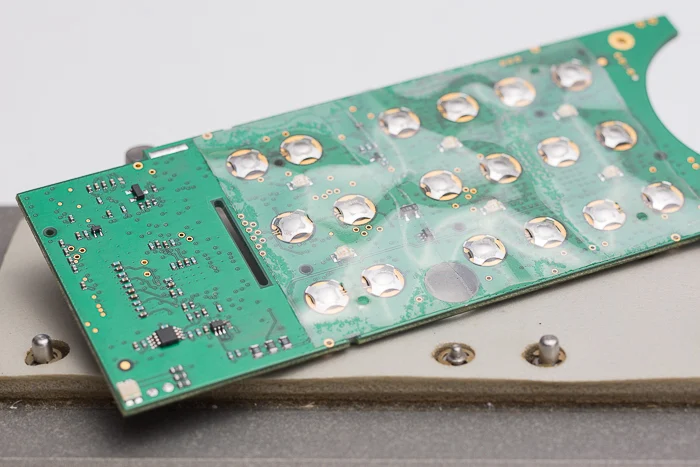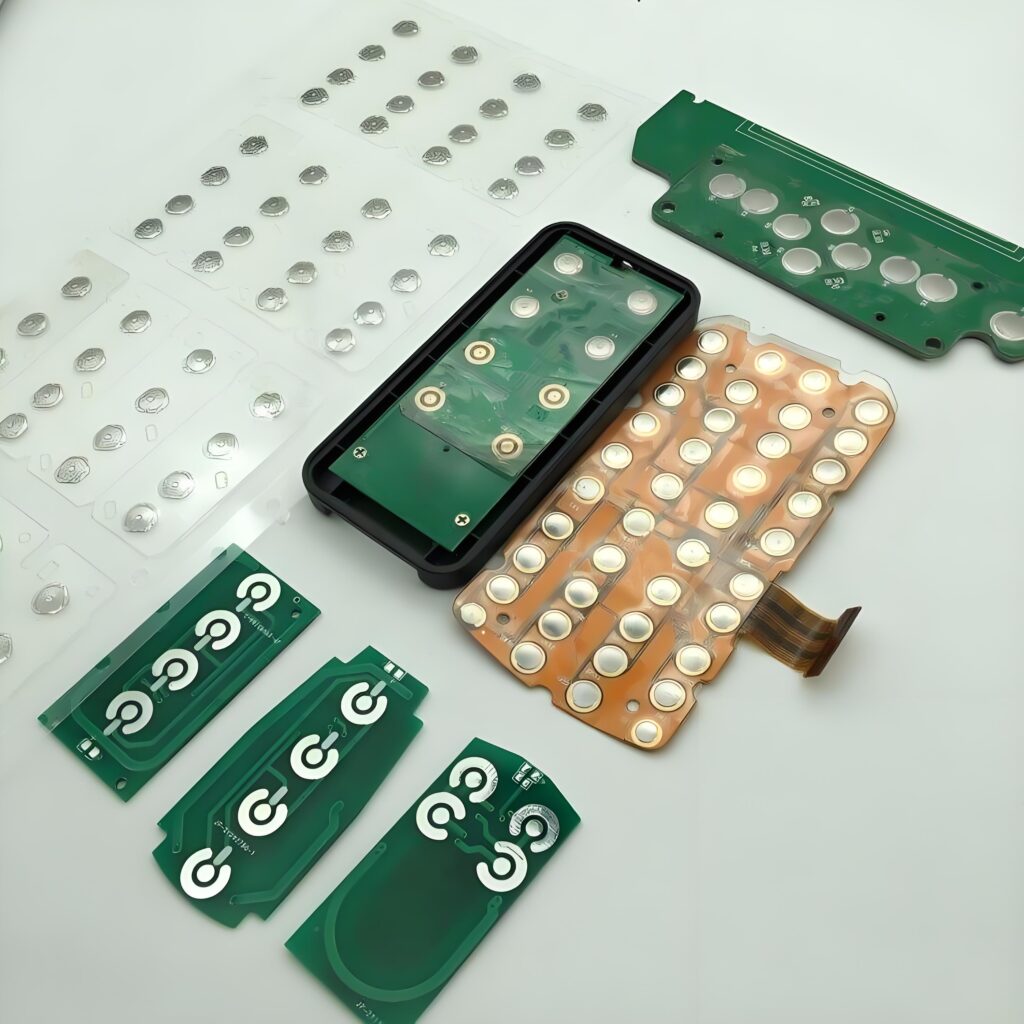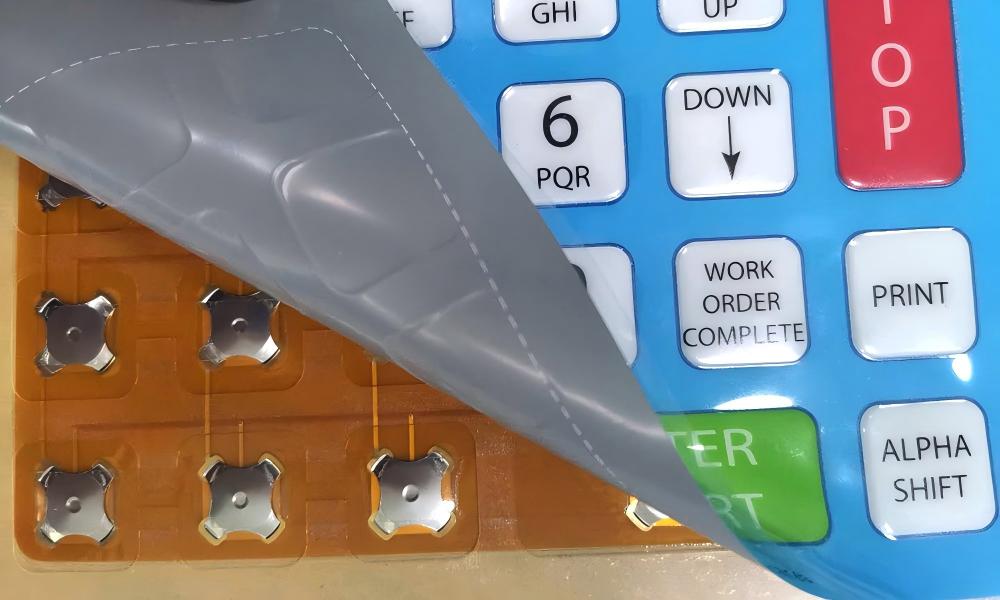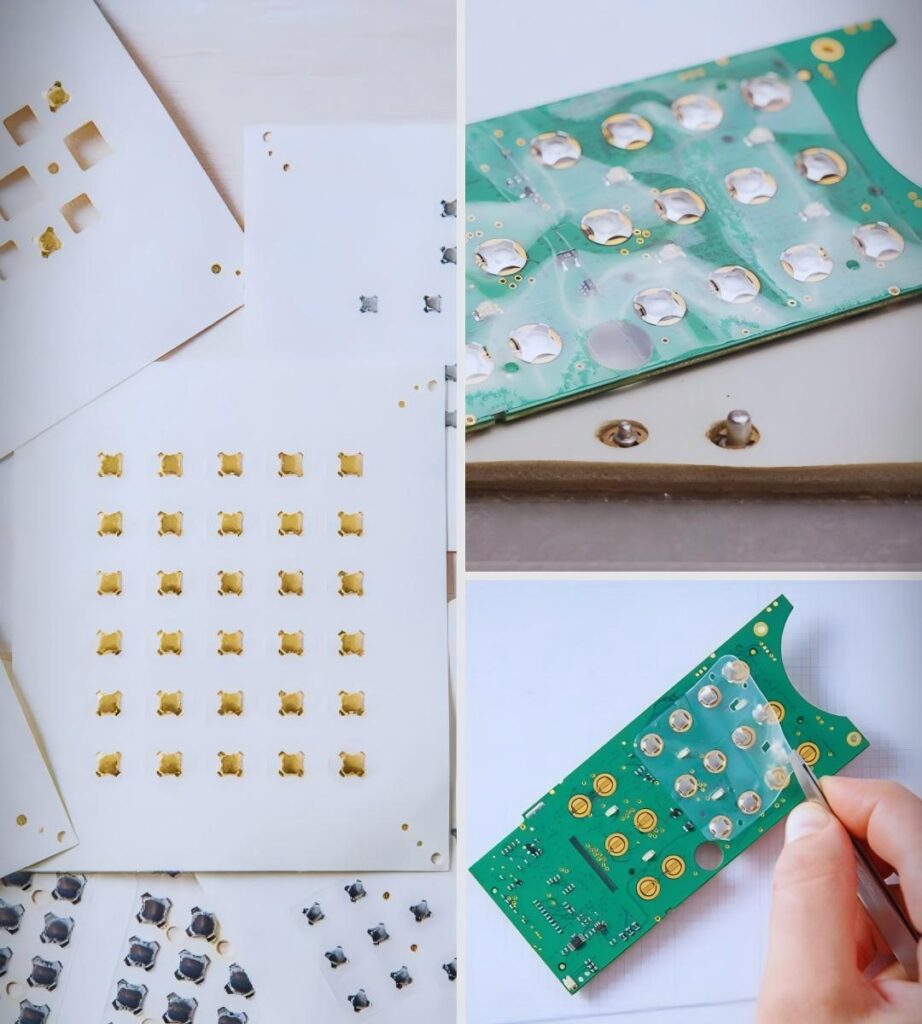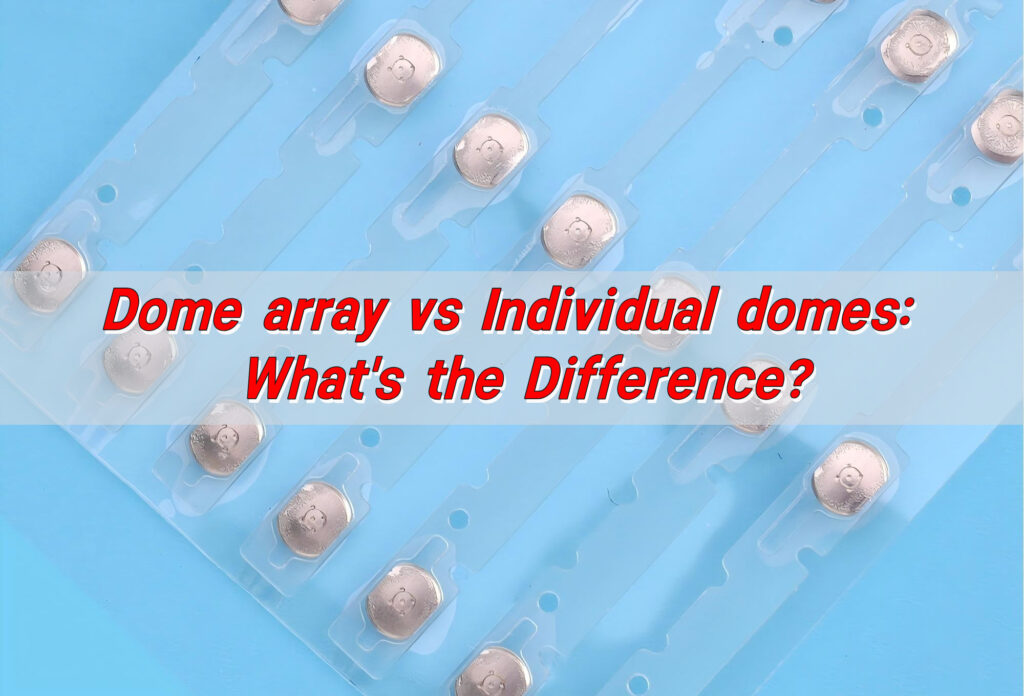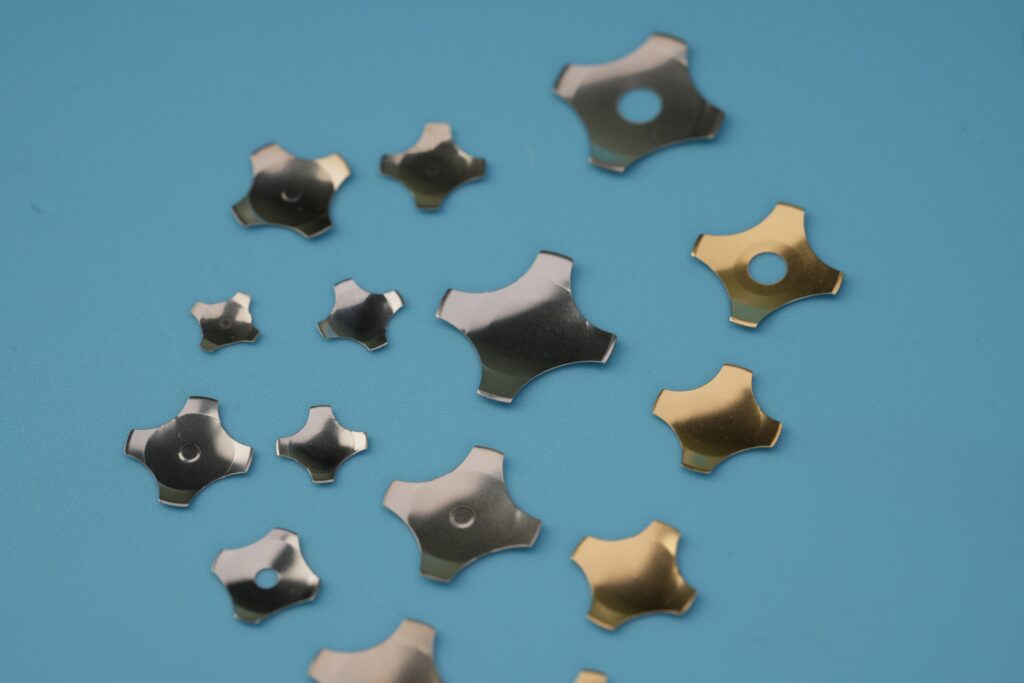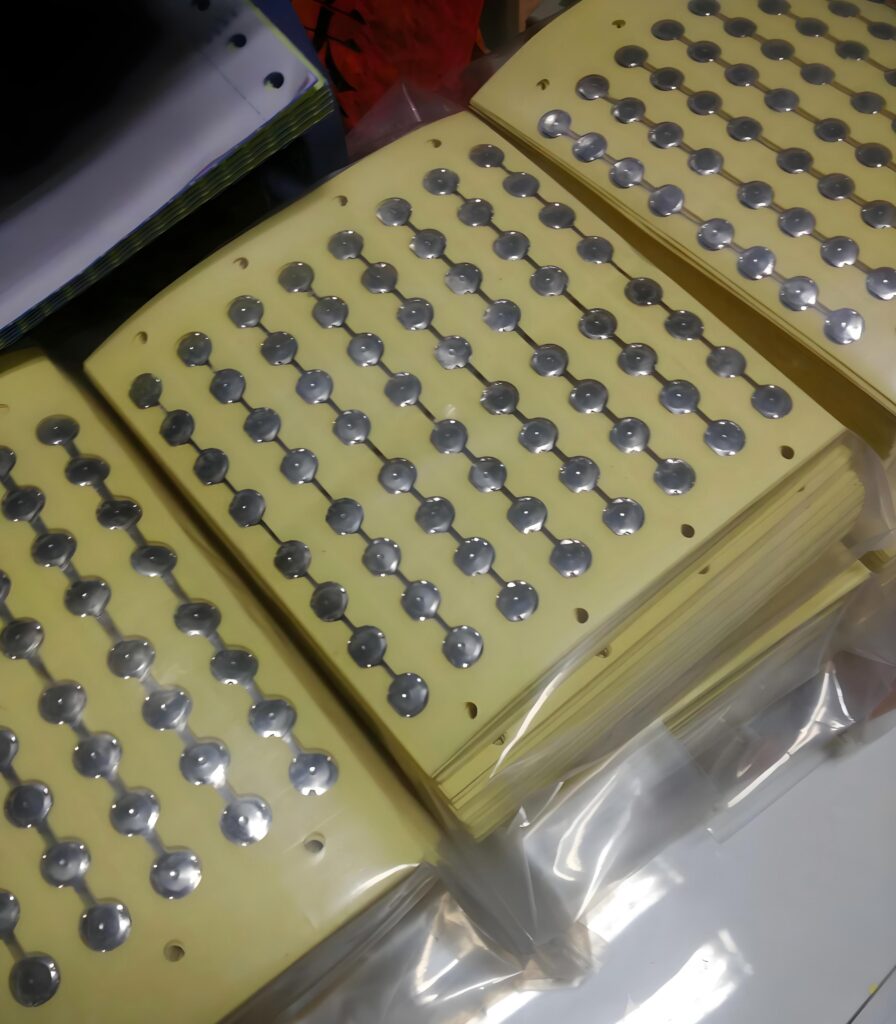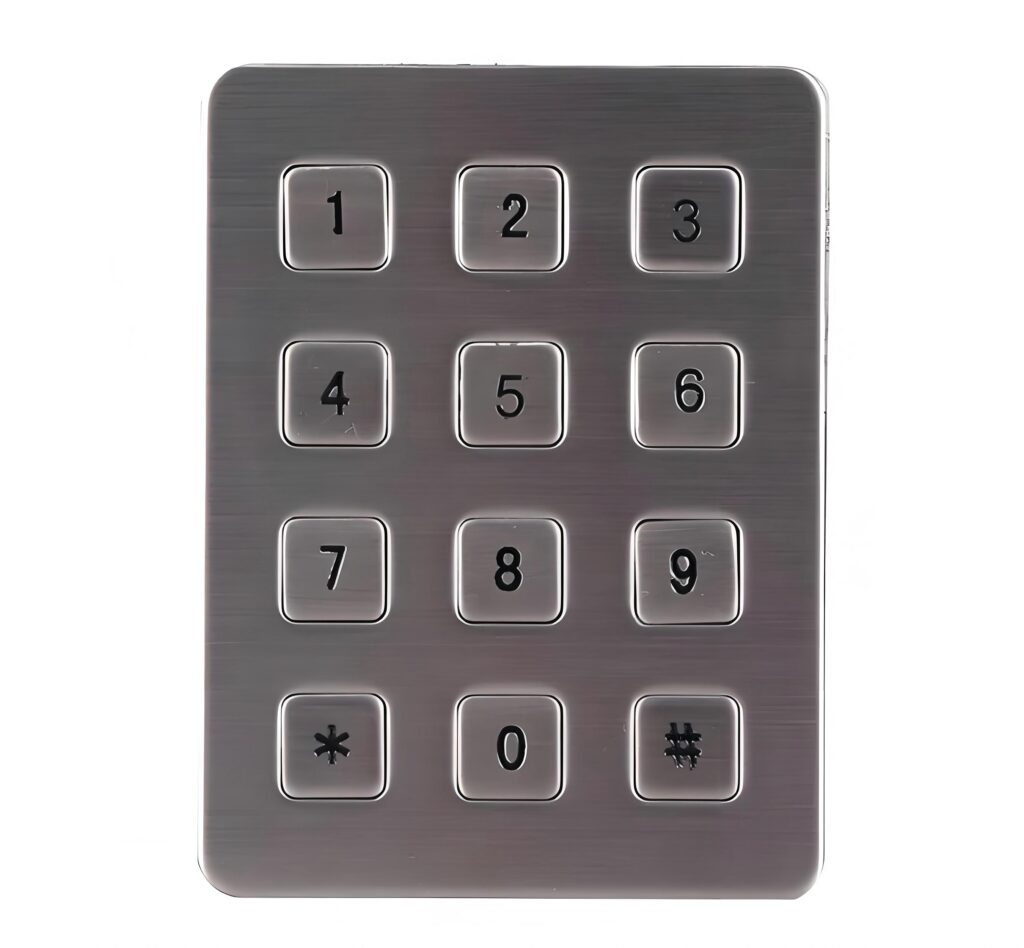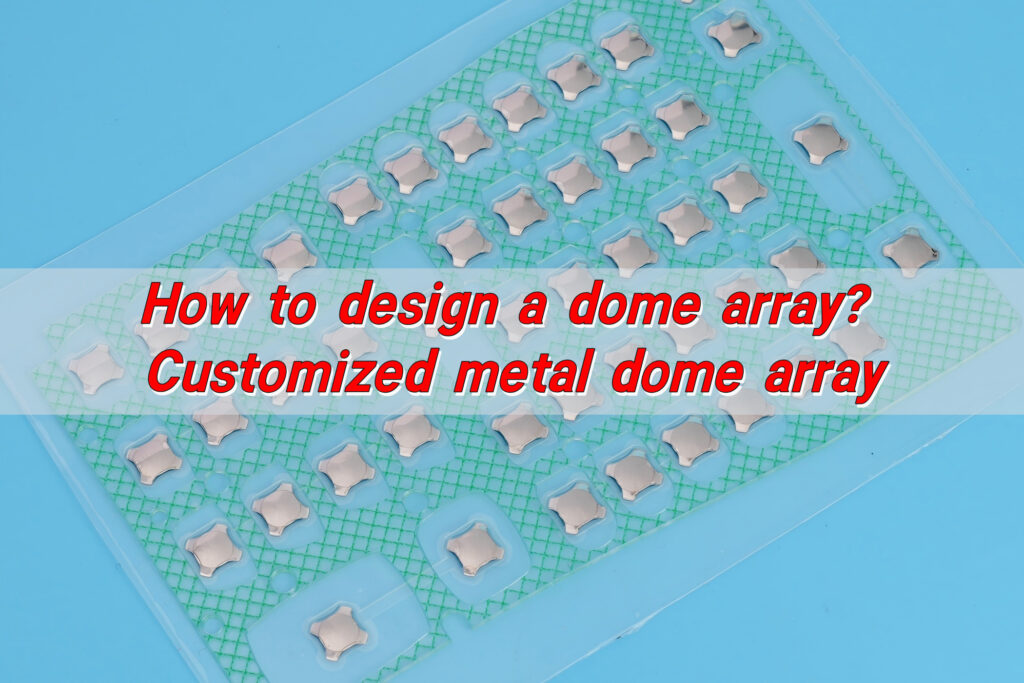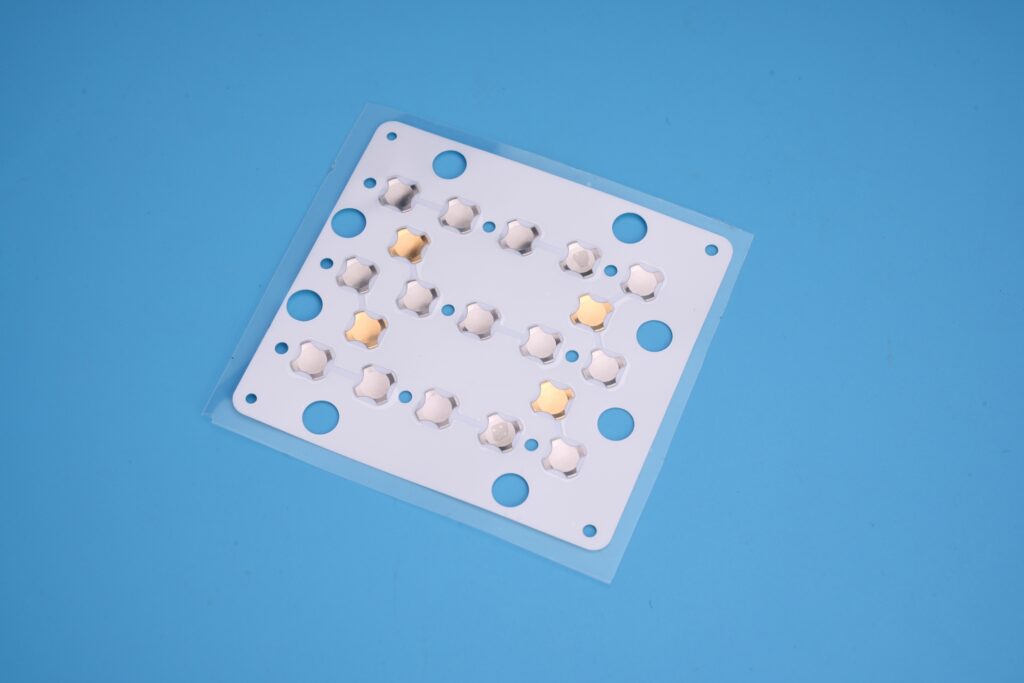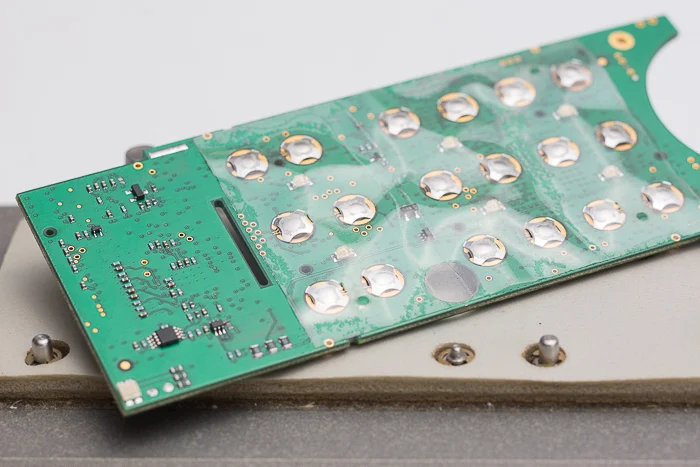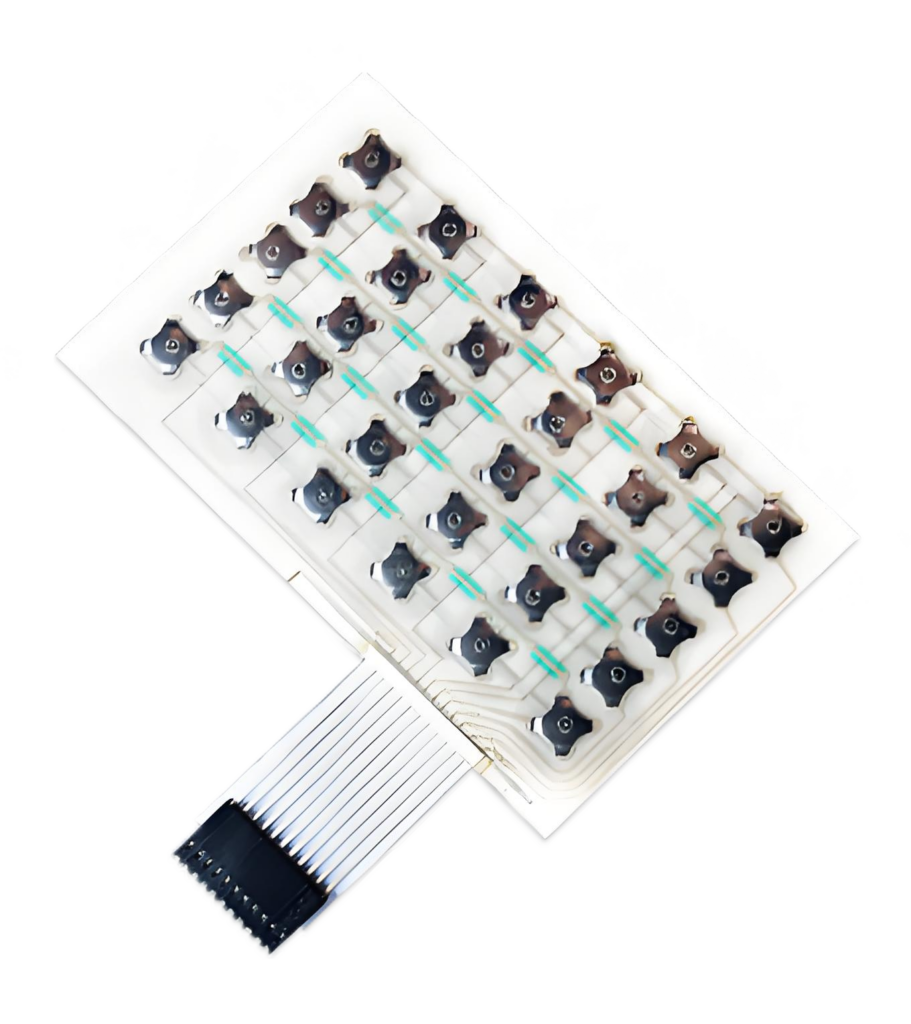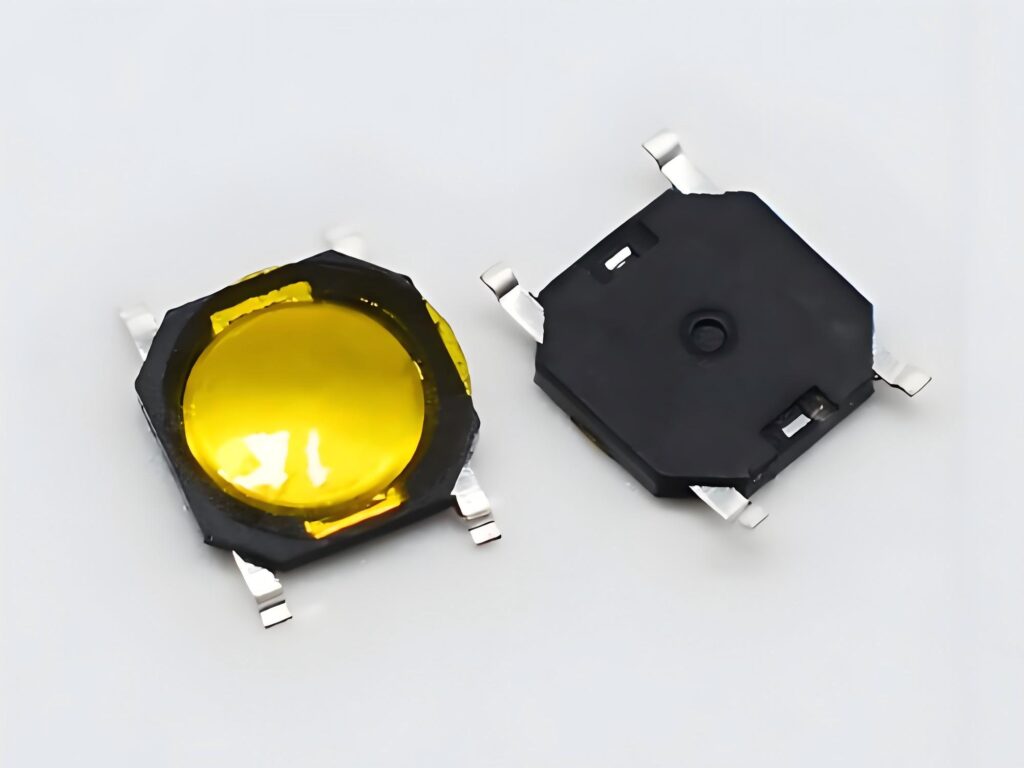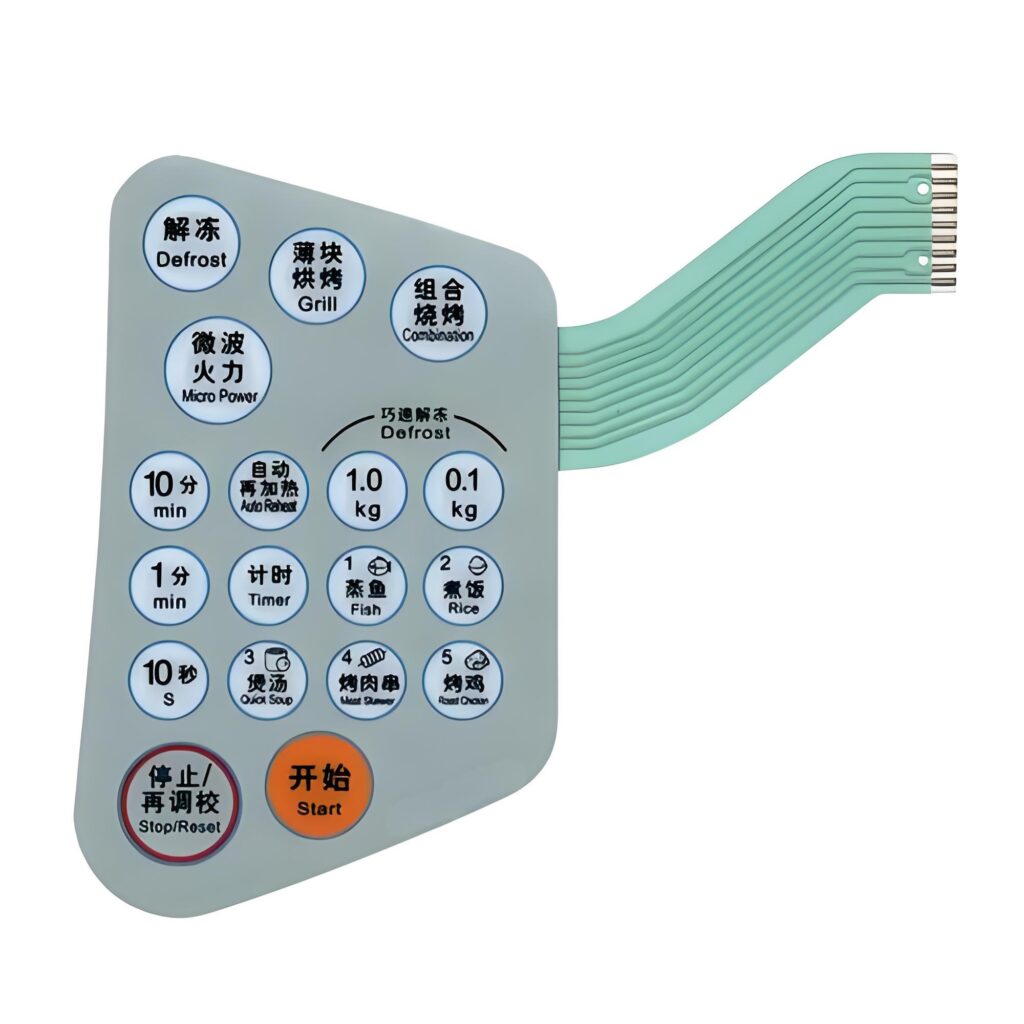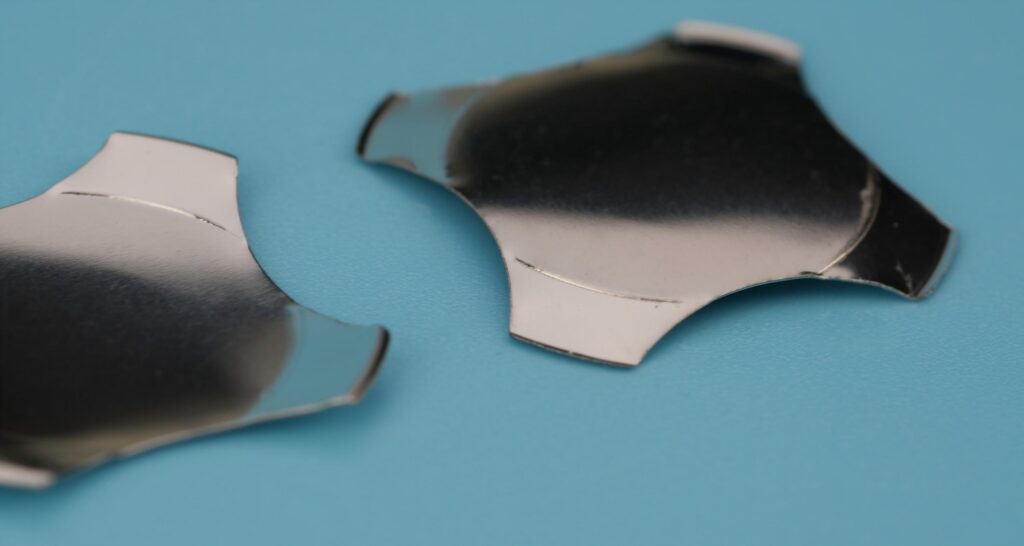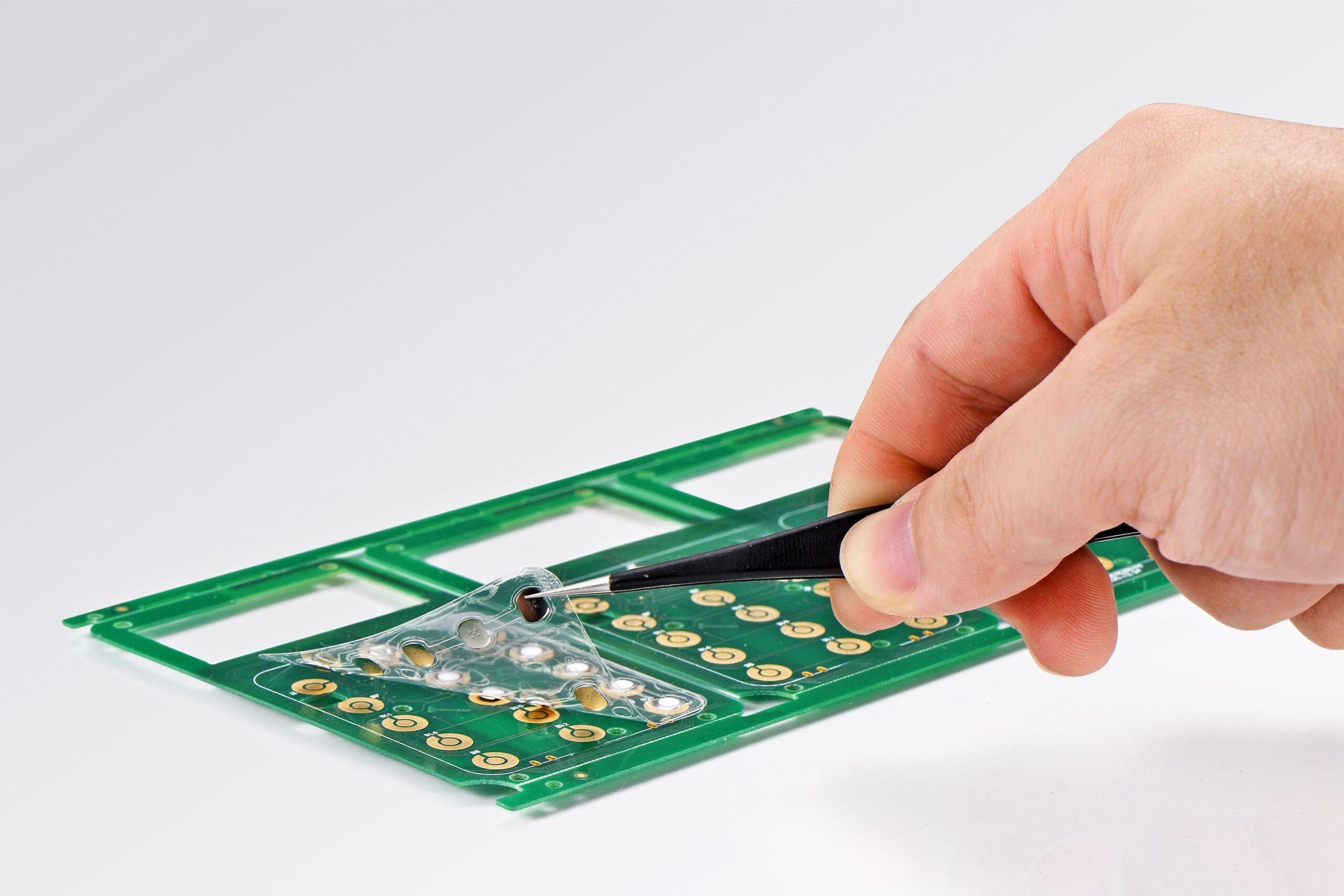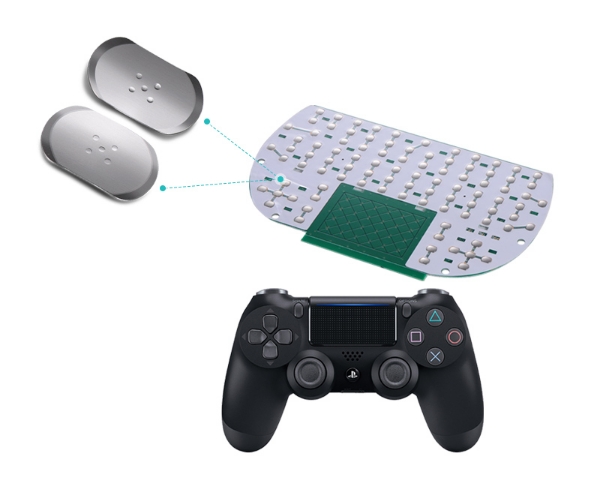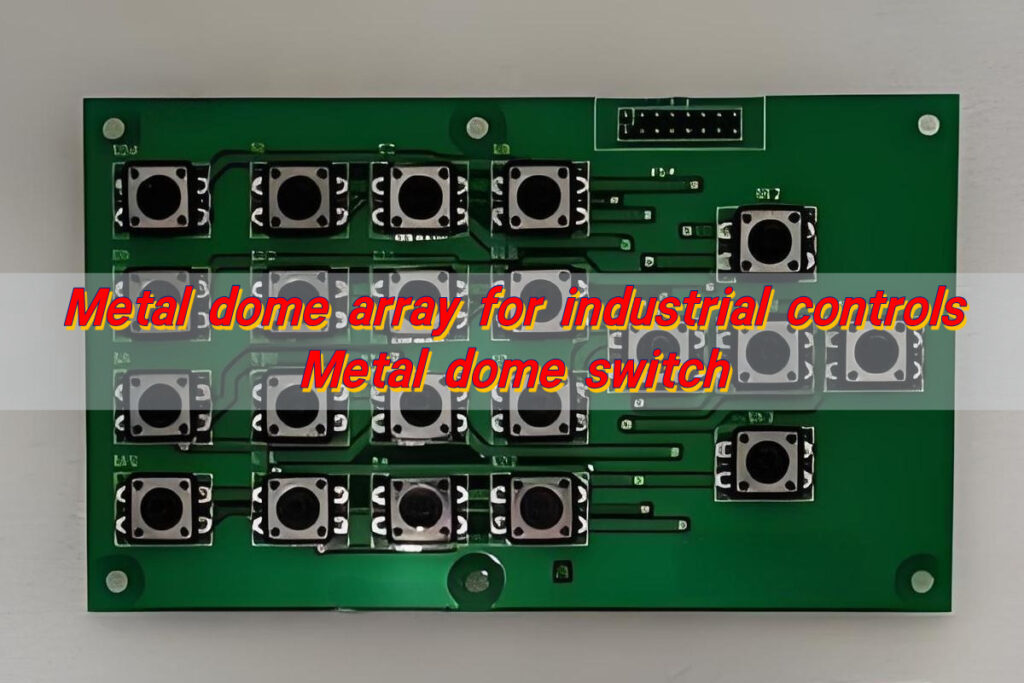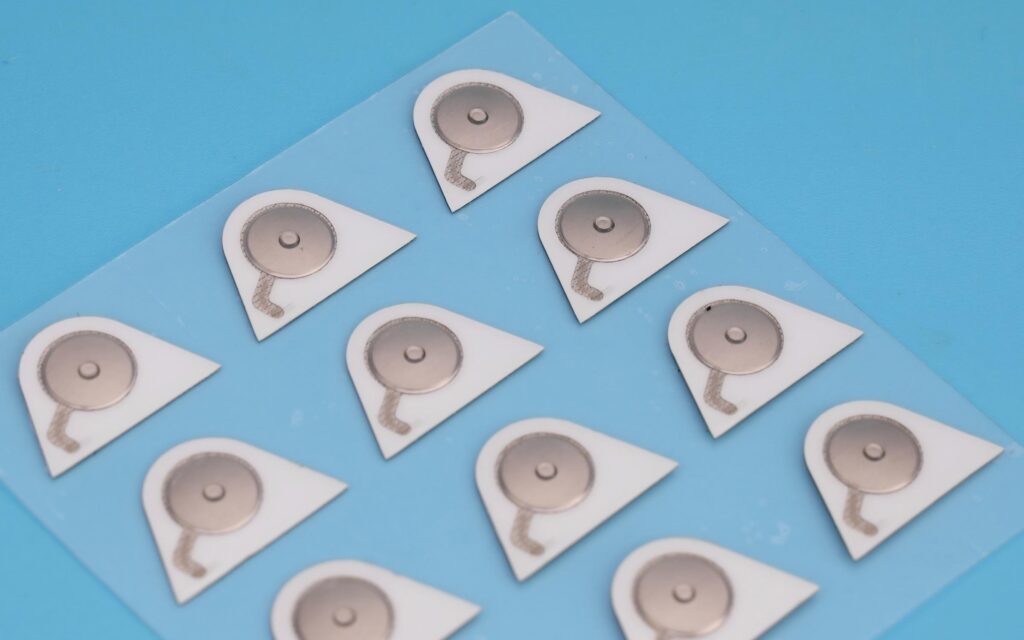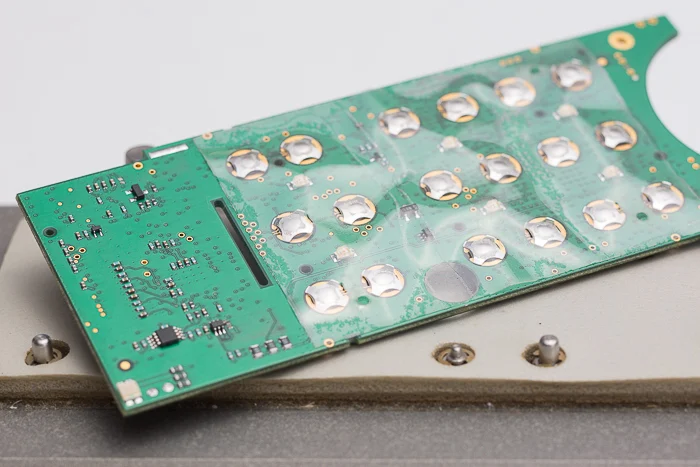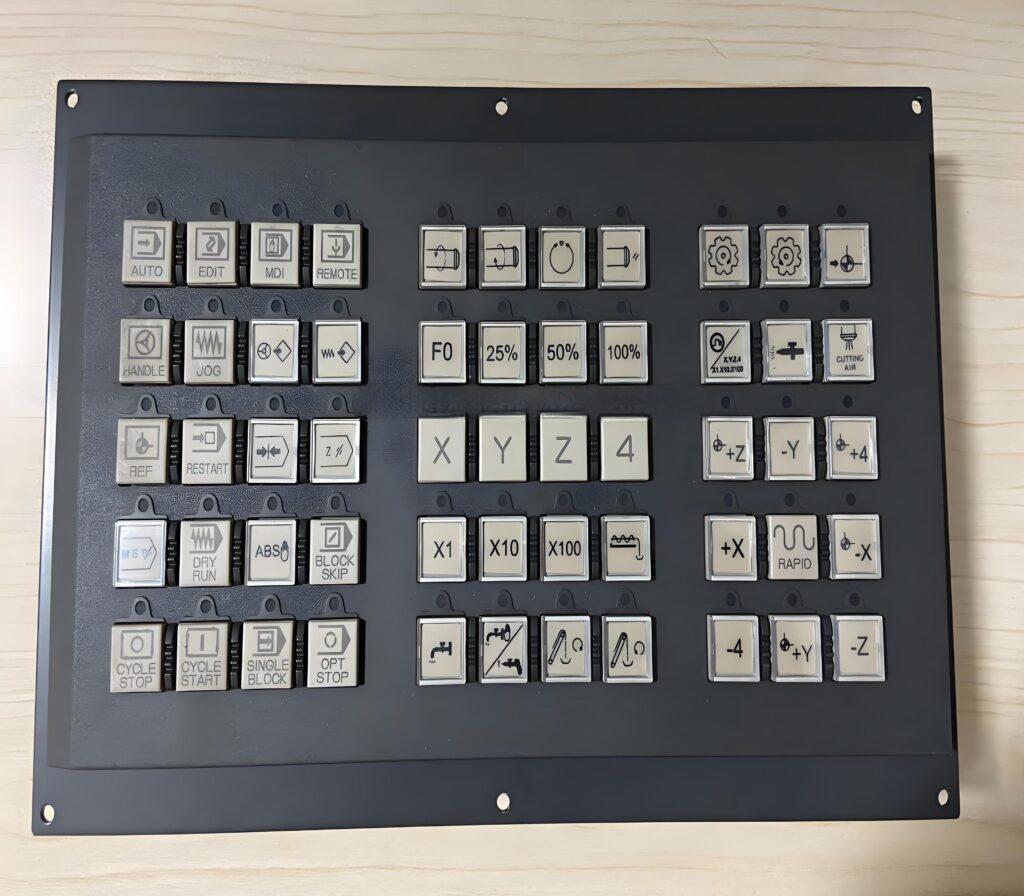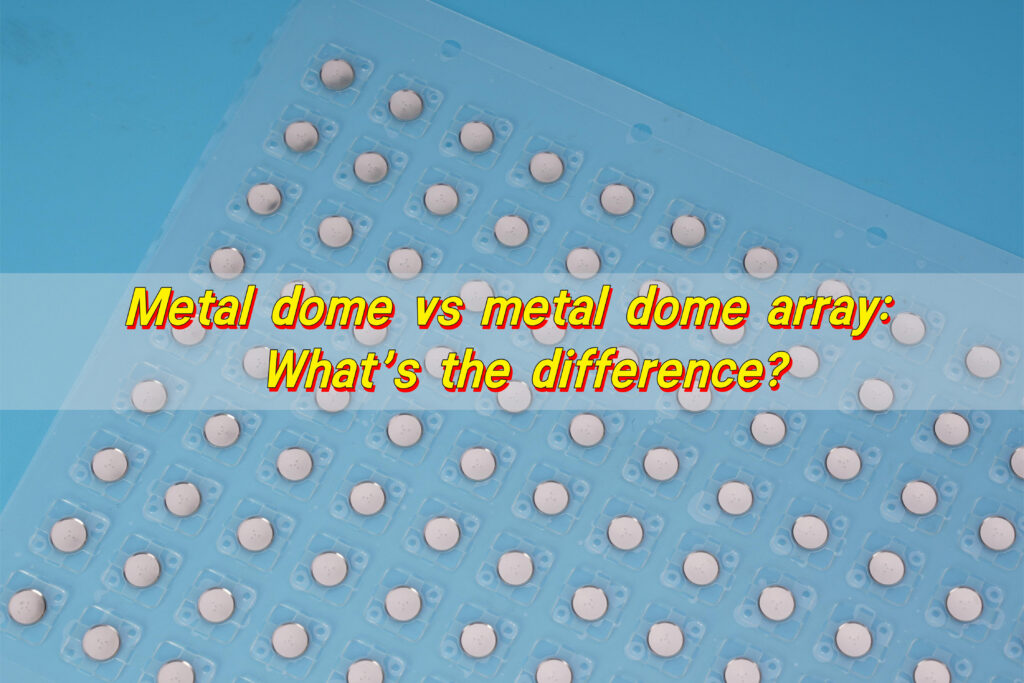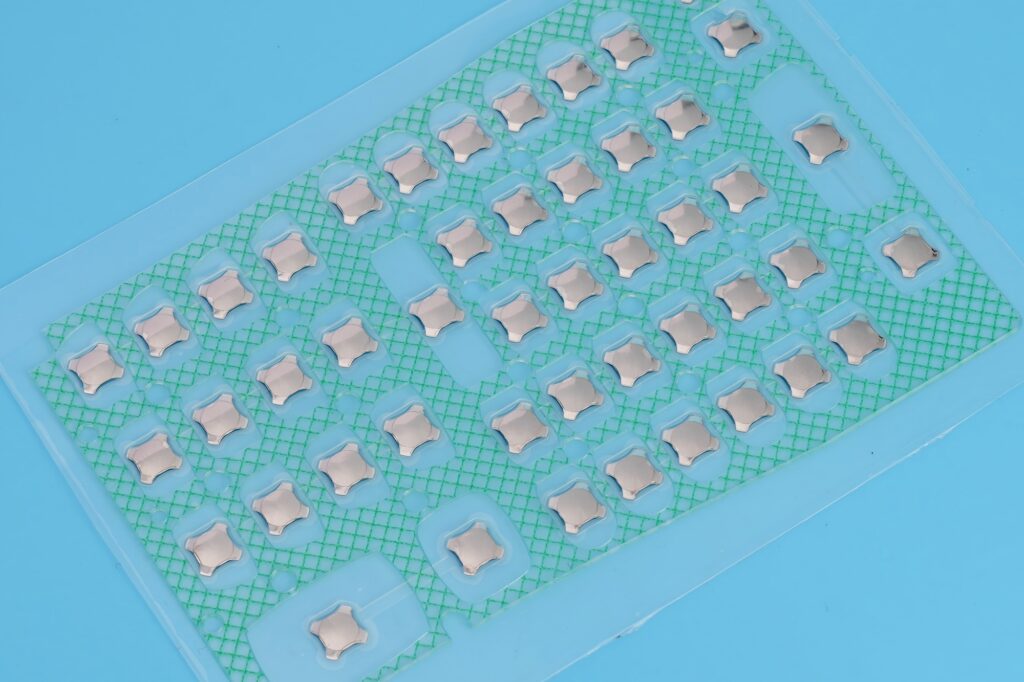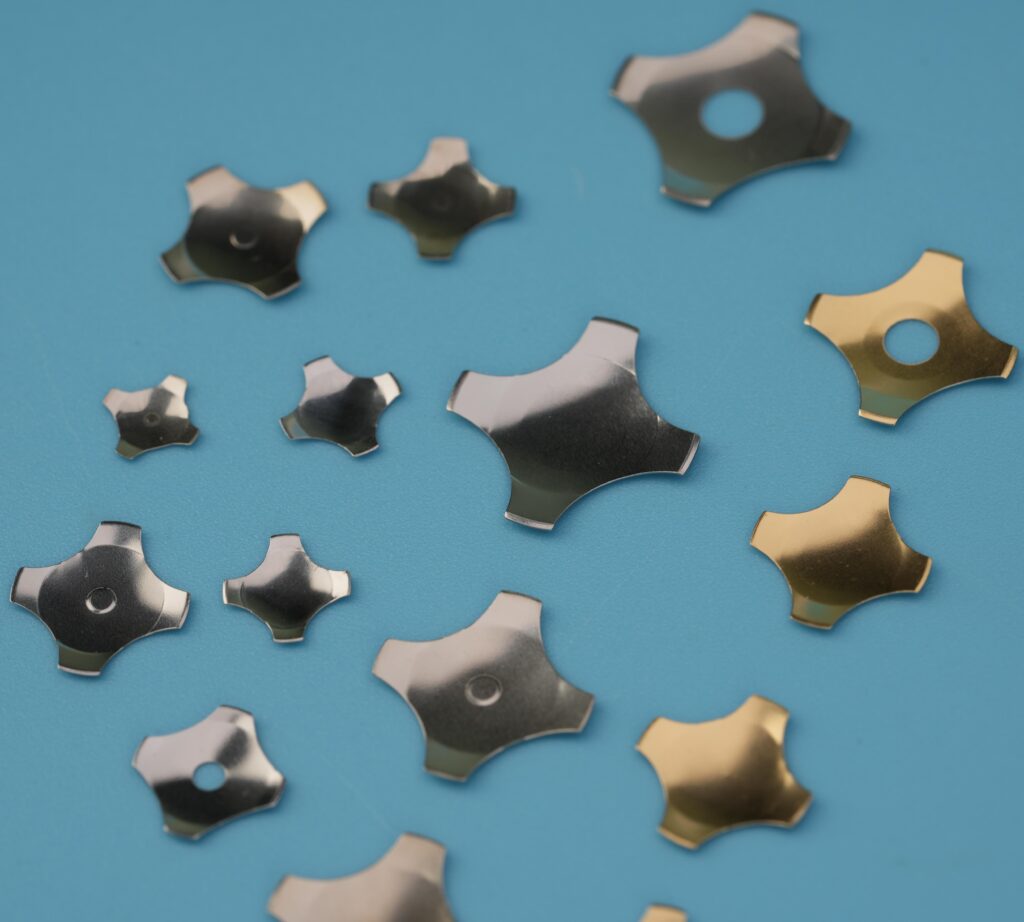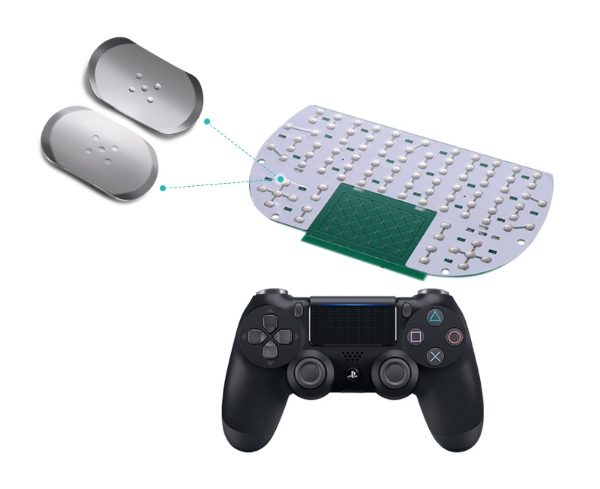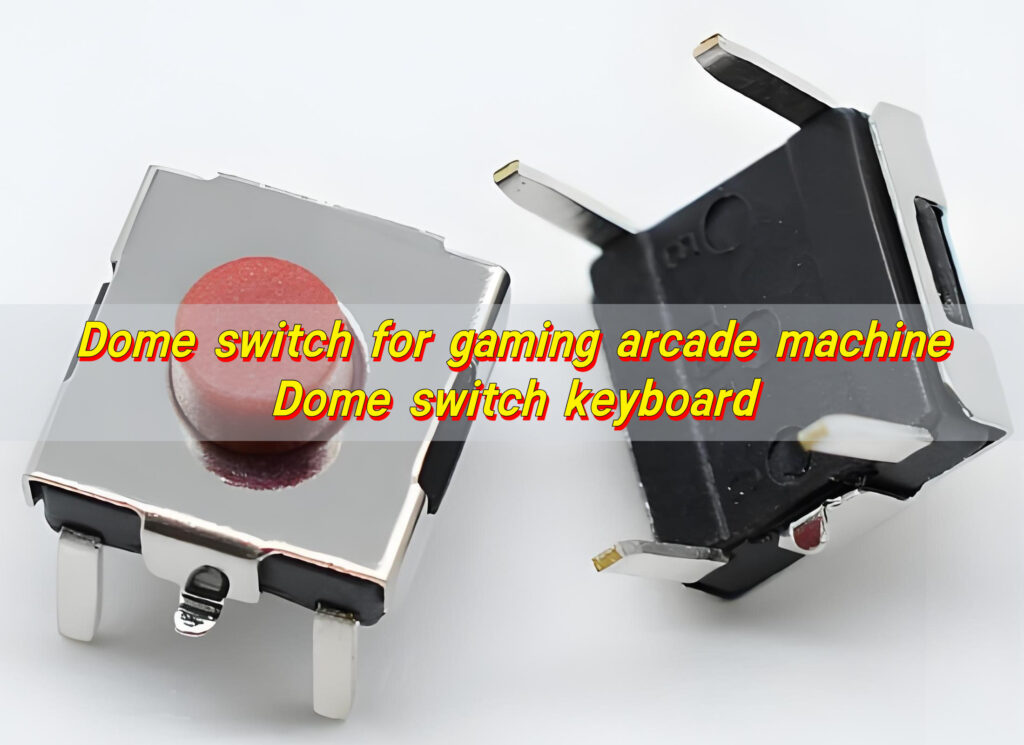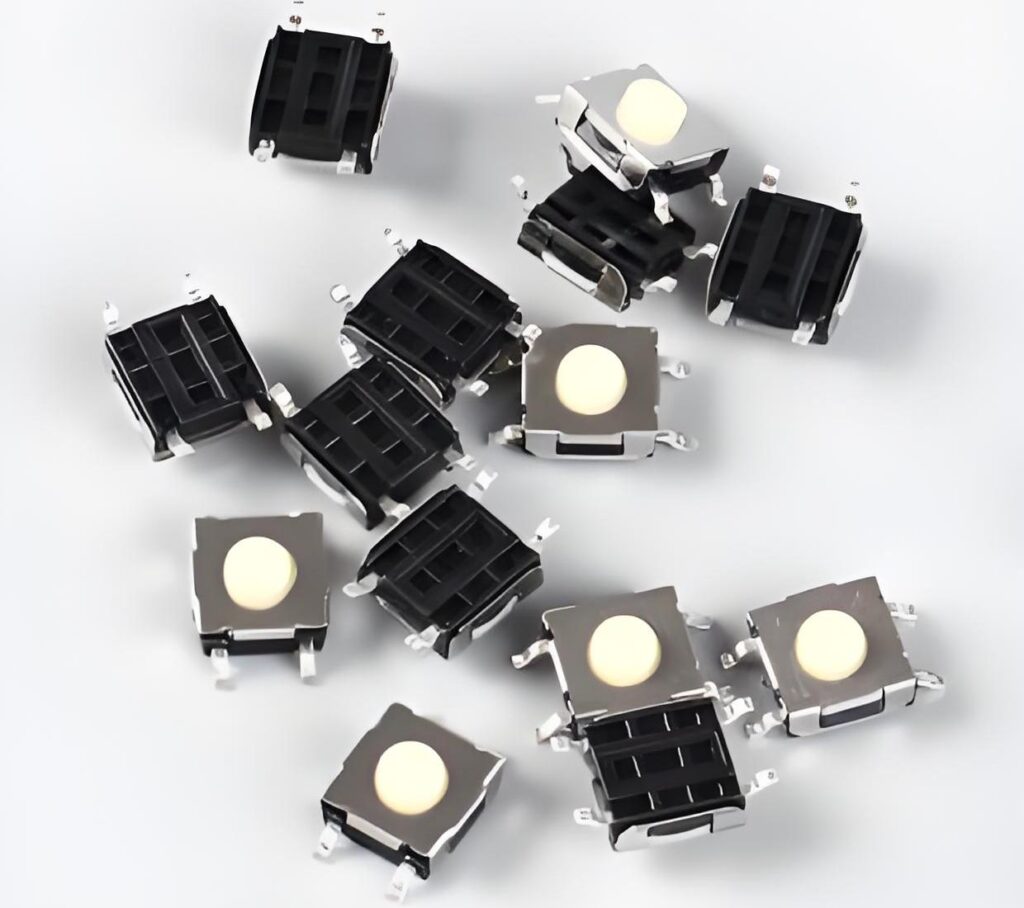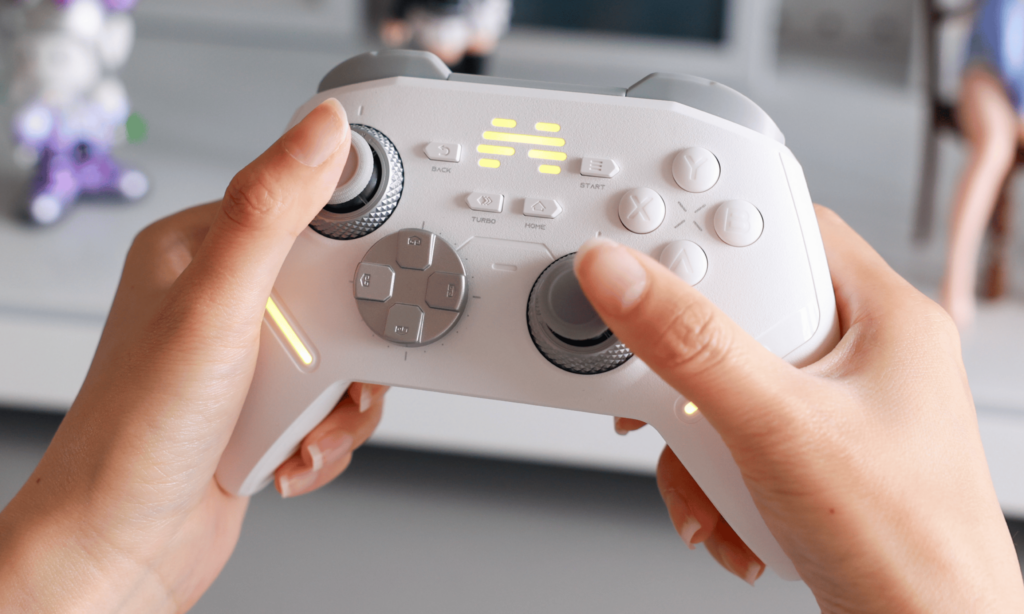Improving metal dome life starts with the right material and precise manufacturing. High-grade stainless steel and accurate stamping prevent stress points that shorten cycle counts. A smooth curve and clean edges let the dome flex evenly, keeping the snap strong for millions of presses.
Design also matters. Correct dome height, leg pattern, and spacer thickness reduce over-compression and spread force across the surface. Matching dome size to the application balances actuation force and durability, giving a crisp click that lasts.
Environmental protection is the final key. Proper plating, sealed packaging, and controlled assembly keep out moisture and dust that can weaken the spring action.
How to make a metal dome?
Metal dome is made of high-quality stainless steel plate, generally alloys such as 301 or 304 are selected to improve strength and corrosion resistance. The sheet is cleaned and cut into precise blanks. Each blank goes through a high-accuracy stamping press. Dies shape the blank into the familiar dome curve while keeping thickness uniform.
After forming, the dome is trimmed to remove any burrs. Sharp edges can shorten life, so trimming and deburring must be flawless.
BEST Technology typically applies a thin coating to the contact areas. Gold or nickel plating improves conductivity and shields the surface from oxidation. The final pieces are washed, inspected, and packed. At the same time, We also make arrays where many domes are mounted on adhesive boards. Arrays save assembly time and reduce handling damage.
How to increase the click feeling of metal dome?
A sharp, lively click comes from correct geometry and material control. Height is a key factor. A taller dome stores more energy and delivers a stronger snap. Thickness also matters. Thicker metal increases actuation force and enhances feedback. The contact shape influences the sound and feel. A focused center contact often creates a crisper sensation.
The supporting layers above and below the dome also shape the click. A stable printed circuit board stops flex that can dampen the sound. The top overlay must flex enough to let the dome collapse cleanly. Adhesive spacing is equally important. Too much pressure can mute the tactile response.
What role does dome size play in tactile response?
Size controls travel, force, and feel. Large domes usually provide longer travel and a heavier snap. They suit rugged equipment or applications where operators wear gloves. Small domes fit slim electronics and deliver a light, fast touch. The number of legs also counts. Four-leg domes spread pressure evenly, improving stability and consistency.
Large domes can last longer because the stress per cycle is lower, but they require more space. Small domes save room yet demand precise alignment. Balancing these factors ensures the best tactile response and long service life.
How many clicks define metal dome life?
Life is measured until the actuation force drops beyond a set tolerance or electrical resistance rises above a limit.
Specification clarity helps purchasing. BEST Technology generally rates domes based on driving force.
Common life benchmarks:
- 1 million cycles. Entry-level domes or low-cost parts.
- 5 million cycles. Standard industrial grade for many consumer products.
- 10+ million cycles. High-reliability domes used in medical, military, and heavy industrial gear.
When setting a specification, calculate the expected presses over the product’s life and add a generous safety factor. For example, a control panel used a few dozen times each day might need only one million cycles, but ordering a five-million-cycle dome adds confidence. Accurate life data helps you avoid field failures and protects your brand.
What factors will affect the life of metal dome?
Material quality is first. High-grade stainless steel resists fatigue and corrosion. Precise stamping prevents stress points. Over-compression during assembly can deform the dome and shorten life.
Environmental conditions such as humidity, salt spray, or rapid temperature change accelerate wear. Cleaning chemicals may attack plating or adhesives. Dust and tiny particles can scratch surfaces and reduce snap force.
You can manage these risks. Specify alloys that match the environment. Define adhesive thickness and spacer height in the purchase order. Require sealed packaging and, when needed, protective coatings.
Which materials boost metal dome life?
Material choice directly drives durability. The industry standard is 304 stainless steel, offering a strong balance of cost and corrosion resistance. For harsher conditions, 316 stainless is preferred. It resists salt and moisture better, making it ideal for outdoor or medical equipment. Hardened stainless alloys raise fatigue strength for extreme cycle counts.
Plating adds another layer of protection. Gold improves conductivity and resists oxidation. Nickel adds hardness and guards against wear. Some designs use silver or palladium on the contact point for superior electrical performance.
Which designs stretch metal dome life?
Good design is as crucial as good material. Design choices often double or triple service life.
Design features that add life:
- Four-leg and multipoint domes. Distribute force and reduce bending stress.
- Array mounting and tape-and-reel packaging. Improve placement accuracy and reduce handling damage.
- Pre-formed arrays with adhesive. Ensure consistent seating and reduce assembly compression errors.
- Support pads and stiffeners. Back the dome to prevent PCB flex.
- Controlled vent holes. Allow air and moisture exchange without letting debris enter.
- Rounded edges and chamfers on trims. Reduce stress concentrations that cause cracks.
How to test metal dome life quickly?
Testing confirms that design and material choices will hold up. Quick incoming inspections catch defects before assembly. Use a handheld force gauge to measure actuation force and travel on sample pieces. Check for burrs or plating flaws under magnification. Simple continuity tests confirm electrical contact.
For full validation, rely on accelerated life tests. BEST Technology typically uses an automated lifecycle machine to press the dome at high speed while measuring the force drop. A test can simulate millions of presses in days. Environmental chambers add heat, humidity, or salt spray to mimic harsh service.
Conclusion:
To improve metal dome life, focus on material quality, precise stamping, smart design, careful assembly, and rigorous testing. Set life targets and use arrays to reduce handling errors.
For samples, test data, or custom solutions, contact sales@metal-domes.com


